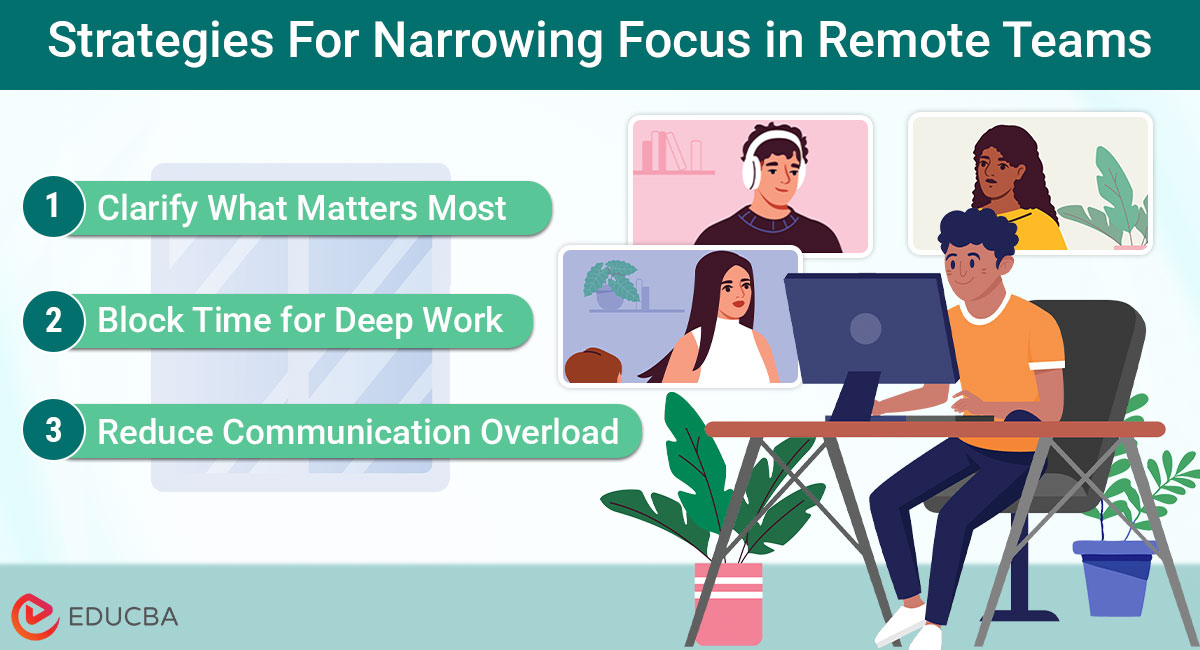
Why Narrowing Focus Matters for Remote and Hybrid Teams
When remote and hybrid teams try to do too much, the most important work often gets the least attention. Taking on too many tasks at once does not mean you are being productive—it usually means your efforts are spread too thin. This article explains how narrowing focus in remote teams can lead to better results, less stress, and more meaningful progress. Tools like remote monitoring software can support this shift by showing where time and energy are really going.
The Problem: Too Many Tasks, Not Enough Progress
In modern work culture, we often believe that doing more means doing better. But when everything is labeled urgent, focus drops — and so does the quality of work. This problem can get even worse for remote and hybrid teams without the right systems.
Here is what happens when the focus is too broad:
- Unclear Priorities: Focusing on too many “top tasks” prevents meaningful progress and dilutes the impact.
- Scattered Workflows: Constant multitasking and fragmented schedules reduce deep, meaningful work.
- Too Much Noise: Endless messages, updates, and meetings drain mental energy.
- Output Overload: Quick results often receive praise, while careful, high-quality work goes unnoticed.
Strategies for Narrowing Focus in Remote Teams
Instead of doing more, encourage your team to do less — but do it better. Narrowing focus means choosing fewer priorities and putting full effort into them. This leads to higher productivity, more engagement, and better results.
Here is how to do it:
#1. Clarify What Matters Most
Start the week with a short team sync. Choose no more than three key goals for each team member. This keeps the team aligned and avoids overloading their focus.
- Link each goal to a larger team objective.
- Use shared boards or checklists to track goals visibly.
- Only add tasks midweek if you remove something else to maintain balance.
- Encourage team members to raise concerns early if they feel off-track.
Remote monitoring tools help here by showing where time goes, making it easier to catch distractions and adjust priorities.
#2. Block Time for Deep Work
Encourage your team to block out quiet time on their calendars to focus deeply on one important task at a time. Even one 60 to 90-minute deep work session can be more valuable than a full multitasking day.
Tips for better focus:
- Schedule deep work during each person’s most productive hours.
- Use focus techniques like Pomodoro or short breaks.
- Make it clear that meetings or chats can wait unless urgent.
Monitoring tools help identify when deep work occurs and when it is interrupted, allowing schedules to be adjusted.
#3. Reduce Communication Overload
Too many meetings and messages can crush productivity. Studies show that 71% of professionals lose time to canceled or unnecessary meetings each week.
Here is how to cut the noise:
- Ask: Does this meeting need to happen, or can it be an update in a shared doc?
- Move status updates to async formats like Slack or Trello.
- Set clear response-time guidelines to reduce the pressure to reply instantly.
Narrowing focus means protecting attention — and communication overload is the enemy.
#4. Reward Deep Work, Not Just Speed
Encourage a team culture prioritizing focus and high-quality work over speed and task quantity.
- Celebrate wins that require deep thinking or effort.
- Ask team members what helped them focus — and what distracted them.
- Track effort and recognize thoughtful, high-impact work.
Tools like Insightful (formerly Workpuls) allow managers to identify periods of deep focus, enabling them to recognize and reward genuine progress.
#5. Use Real-Time Data to Support Focus
You do not need to guess where focus is lost. Remote employee monitoring tools provide real-time data to help your team build better habits — without micromanaging.
These tools can:
- Highlight time-wasting apps or websites.
- Show who’s overloaded or stuck on low-value tasks.
- Help coach better focus habits.
- Give employees visibility into their patterns so they can self-correct.
Narrowing focus is easier when you have the right insights.
Final Thoughts
Everything changes when your team learns to cut the clutter and focus on what matters. Results improve, stress drops and meaningful progress becomes the norm. Narrowing focus in remote teams is not just a strategy—it is a smarter way to work. With the help of monitoring tools, you can build a more productive, focused team without burnout.
Recommended Articles
We hope this article on narrowing focus in remote teams helps you streamline productivity and collaboration. Explore these recommended articles for more strategies to boost efficiency and team alignment in remote work environments.
